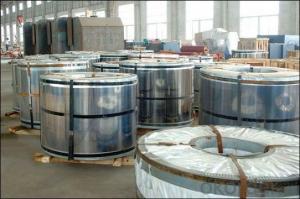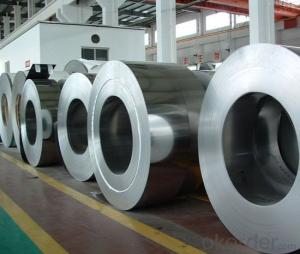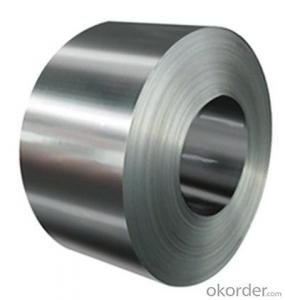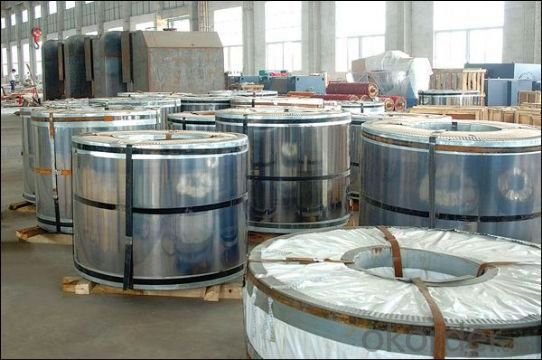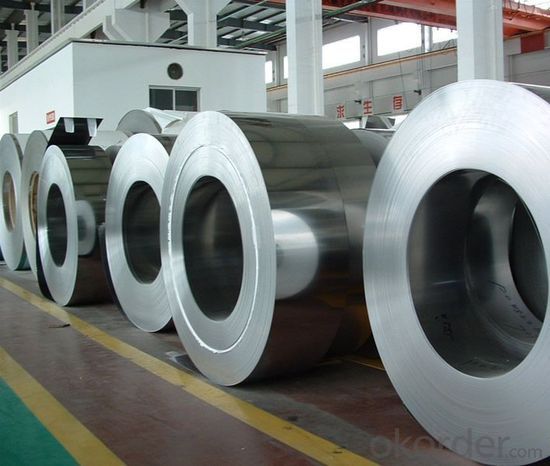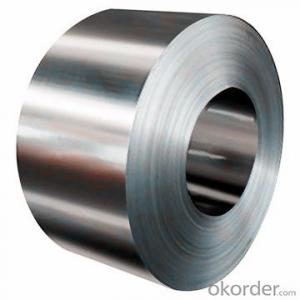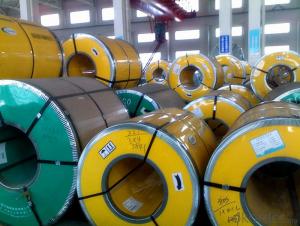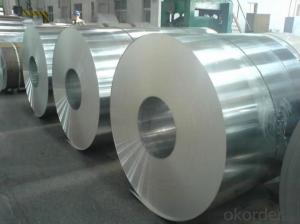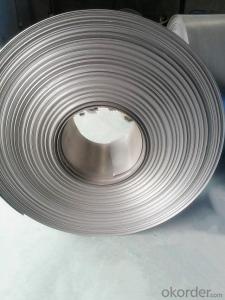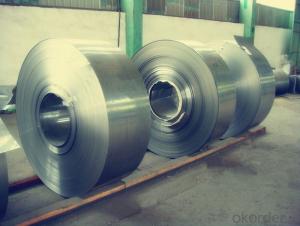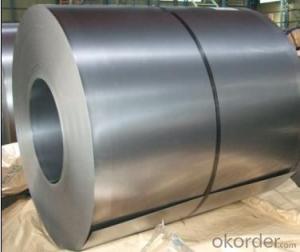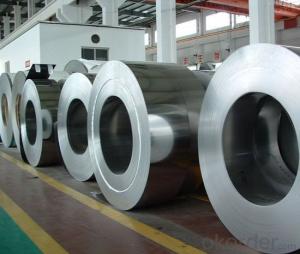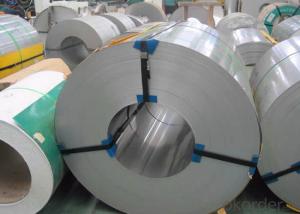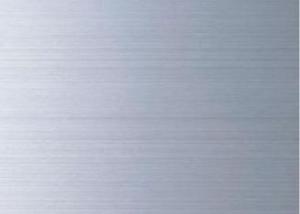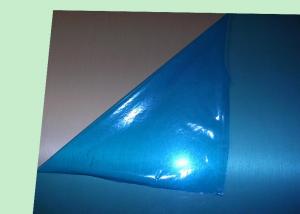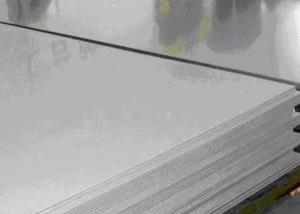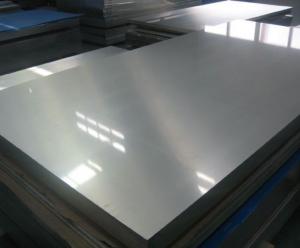201 SERIOUS HOT ROLLED STAINLESS STEEL COIL
- Loading Port:
- Guangzhou
- Payment Terms:
- TT OR LC
- Min Order Qty:
- 100 m.t.
- Supply Capability:
- 10000 m.t./month
OKorder Service Pledge
Quality Product, Order Online Tracking, Timely Delivery
OKorder Financial Service
Credit Rating, Credit Services, Credit Purchasing
You Might Also Like
Packaging & Delivery
| Packaging Detail: | 2b 201 stainless steel coil is packed in export standard package |
| Delivery Detail: | 2b 201 stainless steel coil finished within 15 days |
Specifications
1,2b 201 stainless steel coil thickness0.2~1.5mm
2.Ensure you quality timely delivery
3.2B finish
4.Tolerance 0.01mm
- Q: Are 111 stainless steel strips suitable for outdoor applications?
- 111 stainless steel strips are indeed suitable for outdoor applications. This particular type of stainless steel, known as austenitic stainless steel, boasts remarkable resistance to corrosion and oxidation. It finds frequent use in various outdoor settings, including construction, architecture, and marine environments, where it faces exposure to moisture, salt, and other harsh elements. The presence of ample chromium and nickel in 111 stainless steel ensures exceptional corrosion resistance, cementing its status as a dependable option for outdoor applications. Moreover, its strength and durability guarantee that it can withstand the demanding conditions of the outdoors.
- Q: How do stainless steel strips perform in high-humidity environments?
- Stainless steel strips exhibit exceptional resistance to corrosion, making them ideal for use in environments with high levels of humidity. The presence of chromium in stainless steel results in the formation of a protective layer on the surface, preventing any interaction between the metal and moisture or humidity. This protective layer, referred to as the passive film, remains intact even in conditions of high humidity, ensuring that the structural integrity of the stainless steel strip remains unaffected. Additionally, stainless steel boasts a low thermal conductivity, thus preventing the absorption or retention of moisture from the surrounding environment. This characteristic further enhances its ability to perform admirably in high-humidity environments by significantly reducing the risk of moisture accumulation and consequent corrosion. In conclusion, stainless steel strips are an excellent choice for applications in high-humidity environments due to their corrosion-resistant properties and their capacity to endure moisture without compromising their performance or structural integrity.
- Q: Can stainless steel strips be used in outdoor applications?
- Yes, stainless steel strips can be used in outdoor applications. Stainless steel is highly resistant to corrosion, making it ideal for outdoor environments where it may be exposed to moisture, humidity, and other elements. Additionally, stainless steel is known for its durability and strength, which makes it suitable for various outdoor applications such as construction, signage, and equipment. Whether it is for decorative purposes or functional use, stainless steel strips can withstand the harsh outdoor conditions and provide long-lasting performance.
- Q: Are stainless steel strips suitable for wastewater treatment equipment?
- Yes, stainless steel strips are suitable for wastewater treatment equipment. Stainless steel is known for its corrosion resistance, durability, and ability to withstand harsh environments, making it an ideal choice for equipment that comes into contact with wastewater. It is also easy to clean and maintain, making it a practical option for wastewater treatment applications.
- Q: What are the common dimensions of stainless steel strips?
- The dimensions of stainless steel strips can differ based on the particular application and industry in question. Nevertheless, there are several standard measurements that are commonly accessible. Stainless steel strips typically come in widths that range from 0.5 inches to 24 inches (1.27 cm to 60.96 cm) and thicknesses that range from 0.005 inches to 0.25 inches (0.0127 cm to 0.635 cm). Lengths may differ based on the supplier and the customer's requirements, but standard lengths are often approximately 12 feet (3.66 meters) or 20 feet (6.1 meters). It is worth mentioning that these measurements are not exhaustive and may fluctuate depending on the specific demands of the project or industry.
- Q: What are the dimensions and thickness ranges available in 111 stainless steel strips?
- The dimensions and thickness ranges of 111 stainless steel strips differ based on the manufacturer and supplier. Nevertheless, there are commonly accessible choices for 111 stainless steel strips, comprising thicknesses between 0.1mm and 3.0mm, and widths between 10mm and 600mm. To ascertain the precise dimensions and thickness ranges provided by a particular manufacturer or supplier for 111 stainless steel strips, it is crucial to seek consultation with them.
- Q: Can stainless steel strips be used in architectural railing systems?
- Yes, stainless steel strips can be used in architectural railing systems. Stainless steel is a popular material choice for architectural applications due to its durability, corrosion resistance, and aesthetic appeal. Stainless steel strips can be formed into various shapes and sizes to meet the design requirements of the railing system. Additionally, stainless steel is low maintenance and can withstand harsh environmental conditions, making it an ideal material for outdoor applications. Overall, stainless steel strips provide a strong and visually pleasing option for architectural railing systems.
- Q: Can stainless steel strips be used for electrical enclosures?
- Yes, stainless steel strips can be used for electrical enclosures. Stainless steel is a highly durable and corrosion-resistant material, making it suitable for protecting electrical components from external elements and providing long-term reliability.
- Q: How do stainless steel strips handle exposure to sulfuric acid?
- Stainless steel strips possess outstanding corrosion resistance properties, rendering them suitable for a vast array of applications. When confronting sulfuric acid, stainless steel strips commonly exhibit favorable performance, contingent upon the acid's concentration and temperature. Stainless steel comprises a substantial quantity of chromium, which generates a protective layer on the surface upon exposure to oxygen. This inactive layer acts as a shield against corrosive elements, including sulfuric acid. Nevertheless, the effectiveness of this layer may be compromised under specific circumstances. In diluted sulfuric acid solutions, stainless steel strips exhibit commendable resistance. The inactive layer remains intact, safeguarding the steel against corrosion. However, in scenarios involving higher concentrations or elevated temperatures, the inactive layer may become vulnerable to attack. Under such circumstances, it is advisable to opt for stainless steel grades with increased chromium and nickel content, such as 316 or 317. These alloys offer enhanced resistance to sulfuric acid, even in high concentrations and temperatures. Furthermore, the addition of molybdenum to the stainless steel composition can further augment its resistance to sulfuric acid. It is important to bear in mind that prolonged exposure to sulfuric acid can eventually result in corrosion, even in the most resistant stainless steel grades. Hence, regular inspections and maintenance play a crucial role in ensuring the durability of stainless steel strips within sulfuric acid environments. In conclusion, stainless steel strips generally exhibit satisfactory performance when exposed to sulfuric acid, particularly in diluted solutions. Nonetheless, for higher concentrations and temperatures, it is recommended to select the appropriate stainless steel grade with greater chromium, nickel, and possibly molybdenum content to guarantee optimal corrosion resistance.
- Q: Can stainless steel strips be used in pharmaceutical industries?
- Stainless steel strips are indeed applicable for use in pharmaceutical industries. The pharmaceutical manufacturing sector favors stainless steel as an ideal material owing to its exceptional resistance to corrosion, remarkable strength, and enduring nature. It finds utility in diverse applications, including the fabrication of equipment, storage tanks, piping, and fittings. Stainless steel's ease of both cleaning and sterilization is of utmost importance in upholding impeccable hygiene standards and averting contamination within pharmaceutical production settings. Furthermore, stainless steel strips provide flexibility in terms of size, thickness, and surface finishes, rendering them perfectly suitable for fulfilling a broad spectrum of requirements within the pharmaceutical industry.
Send your message to us
201 SERIOUS HOT ROLLED STAINLESS STEEL COIL
- Loading Port:
- Guangzhou
- Payment Terms:
- TT OR LC
- Min Order Qty:
- 100 m.t.
- Supply Capability:
- 10000 m.t./month
OKorder Service Pledge
Quality Product, Order Online Tracking, Timely Delivery
OKorder Financial Service
Credit Rating, Credit Services, Credit Purchasing
Similar products
Hot products
Hot Searches
Related keywords
